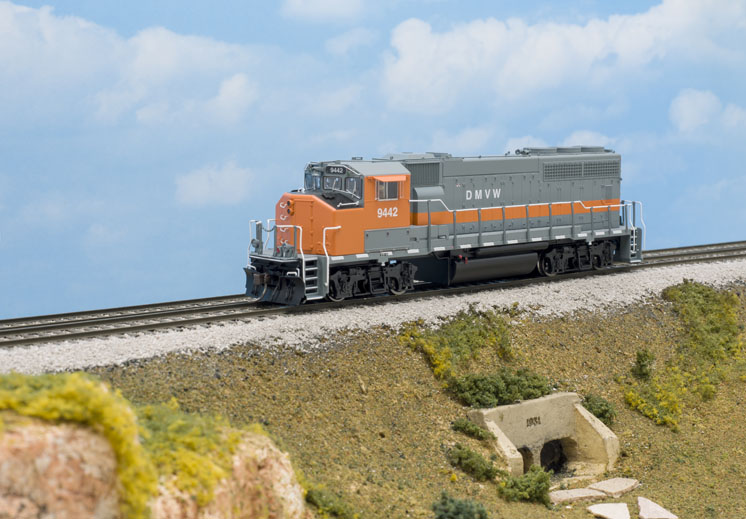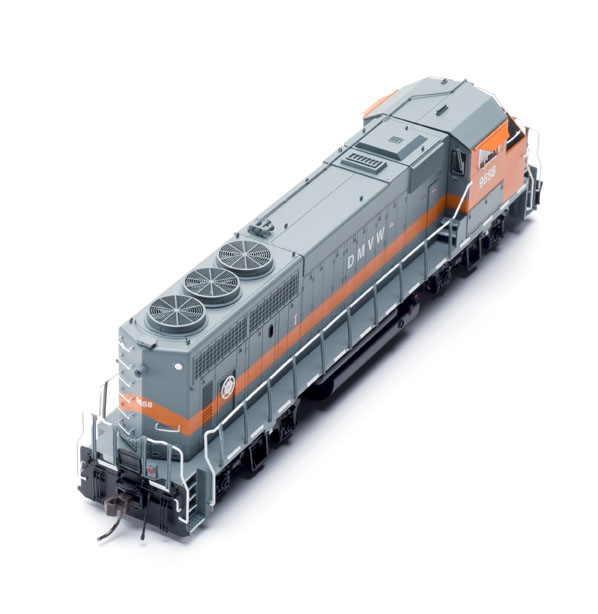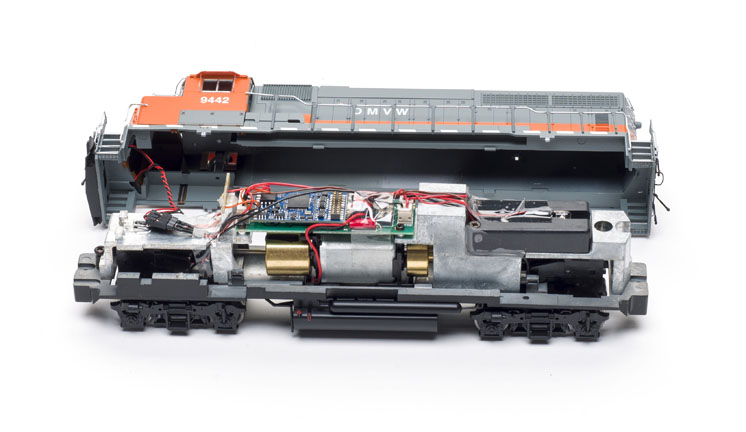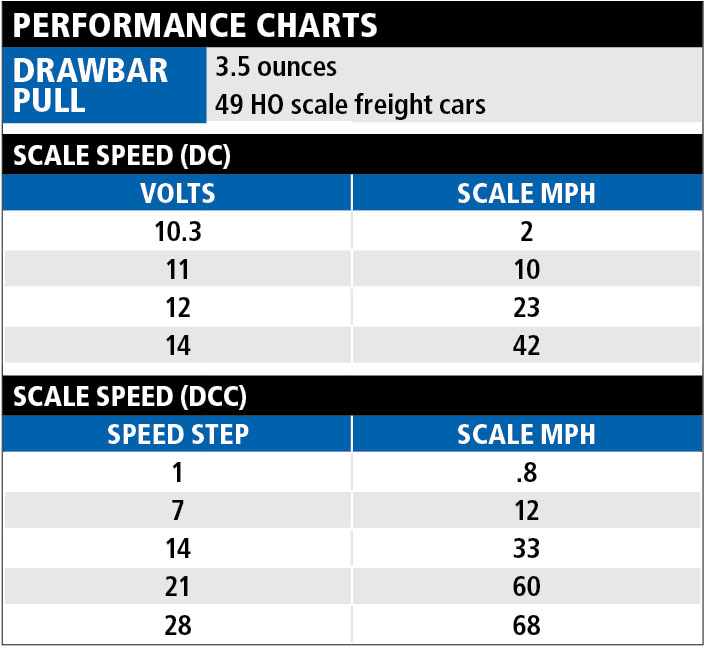The prototype. The Atlas model is based on the last group of wide-cab Canadian National GP40-2s produced, numbered 9633 through 9667. The 35 units were built between March and May 1976 with a safety cab but followed the lines of a standard GP40-2. Earlier diesels, numbered 9400 through 9632, were given the designation GP40-2L, with the L indicating a lightweight frame. In the Field Guide to Modern Diesel Locomo-tives (Kalmbach Books, 2002), Greg McDonnell notes that the lightweight frame allowed the fuel and sand volumes to be increased within the confines of CN’s gross weight guidelines. The frame construction on the GP40-2L made it ride higher than a standard GP40-2.
The wide-cab GP40-2s were used in both mainline and branchline service on the CN. Starting in the mid-1990s, units from the 9400 through 9667 series started to be purged from the roster. Some units have been rebuilt for commuter agencies, while others have been sold or scrapped. Today, there are less than 60 GP40-2Ls from the 9400 through 9667 series left on the CN diesel roster.
The full-size 9442 was built for Canadian National (CN) by GMDD with builder’s number A3020 under order number C365 in May 1974. The unit was on the CN roster into the early 2000s. It was sold to Progress Rail on March 1, 2002, then acquired by DMVW. Photos online show the unit in the sergeant (zebra) stripes scheme with DMVW lettering as late as 2005. Photos from 2008 show the 9442 in DMVW’s gray-and-orange scheme.
The model features many separate, factory-applied details, including a bell, lift rings, three-chime air horn, and painted wire grab irons. The etched-metal radiator fan screens are a nice touch. Cab sunshades and clear plastic wind deflectors are included for the modeler to install.
I compared our sample to prototype drawings published in the November/December issue of Diesel Era magazine. Most of the dimensions are spot-on. The one variant is the height. Our sample is decorated as no. 9442, a GP40-2L that measured 14′-6″ from the top of the rail to the top of the cab. The Atlas model is based on a later production run that used a standard GP40-2 frame. It measures a scale 13′-8″ from railhead to rooftop. One of the three DMVW models, no. 9658, accurately matches the prototype’s height.
The printed-circuit (PC) board is secured with screws above the motor. The 21-pin ESU LokSound decoder is attached to the PC board. A downward- facing speaker is located above the rear truck.
Test spin. I first tested the GP40-2(W) in direct current (DC) with a Bachmann power pack. The realistic sounds of the turbocharged 645 engine came on at 8.5 volts (V), and the unit started moving at 2 scale mph at 10.3V and accelerated to a top speed of 42 scale mph at 14V.
On our Digital Command Control (DCC) test track, the model crawled along at an impressive .8 scale mph in speed step 1 and accelerated to a top speed of 68 scale mph. The first 50 prototype units had a top speed of 76 mph. The remainder topped out at 65 mph.
User-triggered effects including manual notching, the bell, and a realistic Nathan K3L three-chime air horn. An extensive ESU user manual is available as a free download at loksound.com.
The model’s drawbar pull is 3.5 ounces, equivalent to 49 cars on straight and level track. I then took the locomotive over to our staff layout, the Milwaukee, Racine & Troy, and tested the unit on the 3 percent grade between Williams Bay and Skyridge. The road switcher was able to pull 11 50-foot boxcars up the grade.
It’s refreshing to see Atlas offer the GP40-2(W) in paint schemes for regional, short line, and commuter roads. In freight or commuter service, this Geep will serve many HO layouts well.
Price: Direct-current, $169.95; with dual-mode ESU LokSound Select sound decoder, $279.95
Manufacturer
Atlas Model Railroad Co.
378 Florence Ave.
Hillside, NJ 07205
atlasrr.com
Era: mid-2000s to present (as decorated)
Road names (two to three road numbers per scheme). New paint schemes: Dakota, Missouri Valley & Western; Canadian National (two numbers); Iowa Northern; New England Central (one road number); Hudson Bay Ry. (two numbers); Georgia Florida Railnet; Massachusetts Bay Transportation Authority; and Vermont Ry. (two numbers). Three numbers per scheme unless noted; also available undecorated in early and late versions.
Features
- 8-pin plug for Digital Command Control decoder with factory-installed speaker (direct-current models only)
- Accumate couplers, mounted atcorrect height
- Blackened metal wheels, in gauge
- Constant, directional golden-white light-emitting-diode headlights
- Factory-installed and painted
- crew figures
- Minimum radius: 18″
- Weight: 13.6 ounces

















